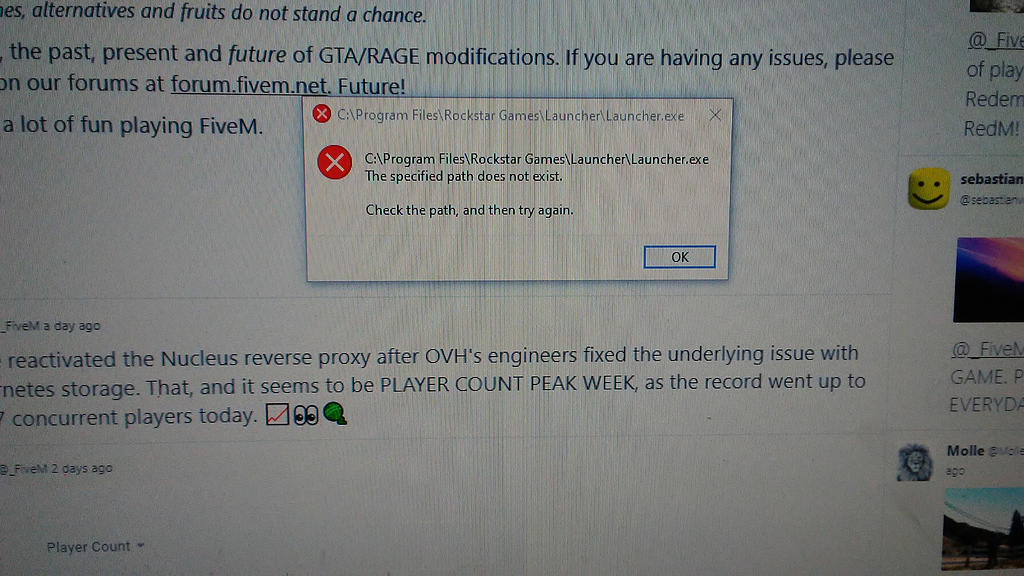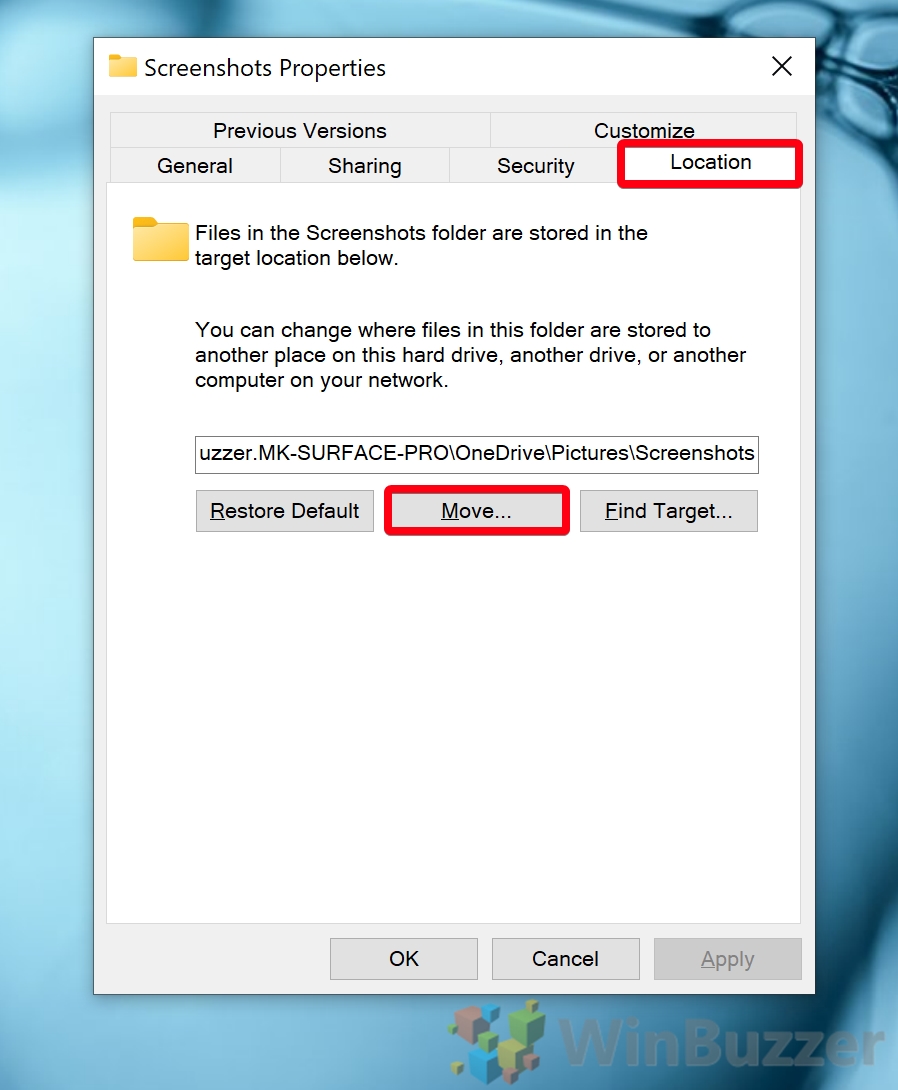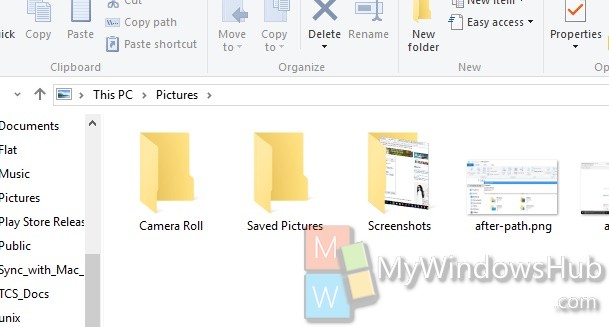

- #SETTING SCREENSHOT PATH WINDOWS 10 HOW TO#
- #SETTING SCREENSHOT PATH WINDOWS 10 PRO#
- #SETTING SCREENSHOT PATH WINDOWS 10 PC#
- #SETTING SCREENSHOT PATH WINDOWS 10 DOWNLOAD#
Motherboard: ASUS ROG Maximus XI Formula Z390
#SETTING SCREENSHOT PATH WINDOWS 10 PRO#
OS: 64-bit Windows 11 Pro for Workstations System Manufacturer/Model Number: Custom self built
#SETTING SCREENSHOT PATH WINDOWS 10 HOW TO#
How to Add or Remove Location tab in Folder Properties in Windows 10. How to Change or Restore Pictures Folder Icon in Windows. Turn On or Off Documents, Pictures, and Desktop Folder Protection with OneDrive in Windows 10. 
#SETTING SCREENSHOT PATH WINDOWS 10 PC#
How to Auto Save Documents and Pictures to OneDrive or This PC in Windows 10. How to Change Your Storage Save Locations in Windows 10. How to Move Your Videos Folder Location in Windows 10.  How to Move Your Searches Folder Location in Windows 10. How to Change the Location of your OneDrive Folder in Windows 10. How to Move Your Music Folder Location in Windows 10. How to Move Your Favorites Folder Location in Windows 10. How to Move Your Downloads Folder Location in Windows 10. How to Move Your Documents Folder Location in Windows 10. How to Move Your Desktop Folder Location in Windows 10. How to Move Users Folder to another Location in Windows 10. How to Restore Default Location of Your Personal Folders in Windows 10. How to Hide or Show User Profile Personal Folders in Windows 10 File Explorer. Undo: Merged your Pictures folder with your User folder. Move or Restore Default Location of Pictures Folder in Windows 11ġ If you currently have your Pictures folder protected by OneDrive, then you will need to temporarily turn off OneDrive protection for this folder until after you move it.Ģ If you haven't already, you will need to create a new folder named Pictures at the location (ex: "E:" ) you want to move your personal Pictures folder to.
How to Move Your Searches Folder Location in Windows 10. How to Change the Location of your OneDrive Folder in Windows 10. How to Move Your Music Folder Location in Windows 10. How to Move Your Favorites Folder Location in Windows 10. How to Move Your Downloads Folder Location in Windows 10. How to Move Your Documents Folder Location in Windows 10. How to Move Your Desktop Folder Location in Windows 10. How to Move Users Folder to another Location in Windows 10. How to Restore Default Location of Your Personal Folders in Windows 10. How to Hide or Show User Profile Personal Folders in Windows 10 File Explorer. Undo: Merged your Pictures folder with your User folder. Move or Restore Default Location of Pictures Folder in Windows 11ġ If you currently have your Pictures folder protected by OneDrive, then you will need to temporarily turn off OneDrive protection for this folder until after you move it.Ģ If you haven't already, you will need to create a new folder named Pictures at the location (ex: "E:" ) you want to move your personal Pictures folder to. 
It is highly recommended to create a system image backup first to make it easy to undo if you were to make a mistake in the steps below.įor a Windows 11 version of this tutorial, see: This tutorial will show you how to move the default location of your Pictures folder to where you want in Windows 10. You can change where files in this Pictures folder are stored to another place on the hard drive, another drive, or another computer on the network. Therefore, I can't right-click the folder and change the location back to my laptop. It just takes a second, and it will reset the screenshot count back to 1.How to Move Your Pictures Folder Location in Windows 10īy default, Windows stores your personal Pictures folder in your account's %UserProfile% folder (ex: "C:\Users\Brink"). On Windows 10, in the past, I right-clicked This PC>Pictures>ScreenShots>Properties and changed the screenshot location to an Apple Time Capsule. Save it to a convenient location on your drive, right-click and select Run as Administrator.
#SETTING SCREENSHOT PATH WINDOWS 10 DOWNLOAD#
Or to make things easier, just download this. Screenshots that you took before making the Registry tweak will still be the same number where you left off.Įach time you want to reset the count, you can go into the Registry again. Now when you take a new screenshot, look in My Pictures > Screenshots, and you’ll see the new shots start over with (1), (2) and so on. Now in the right pane, double-click ScreenshotIndex and change the Decimal Value to 1 and click OK.
HKEY_CURRENT_USER\Software\Microsoft\Windows\CurrentVersion\Explorer. Now in the Registry Editor navigate to the following path: Use the keyboard shortcut Windows Key + R to bring up the Run dialog and type: regedit and hit Enter or click OK. Notice they’re all numbered in sequential order with the generic name Screenshot and the number in parenthesis.Įven after deleting all of the screenshots, when you take a new one, it won’t reset the count number. Here’s a look at my Pictures folder after taking screenshots over the past few weeks on my Surface Pro and RT (yes I still have an RT device). Note: This works with Windows 8.1, RT, and Windows 10 Default Screenshot Count








 0 kommentar(er)
0 kommentar(er)
